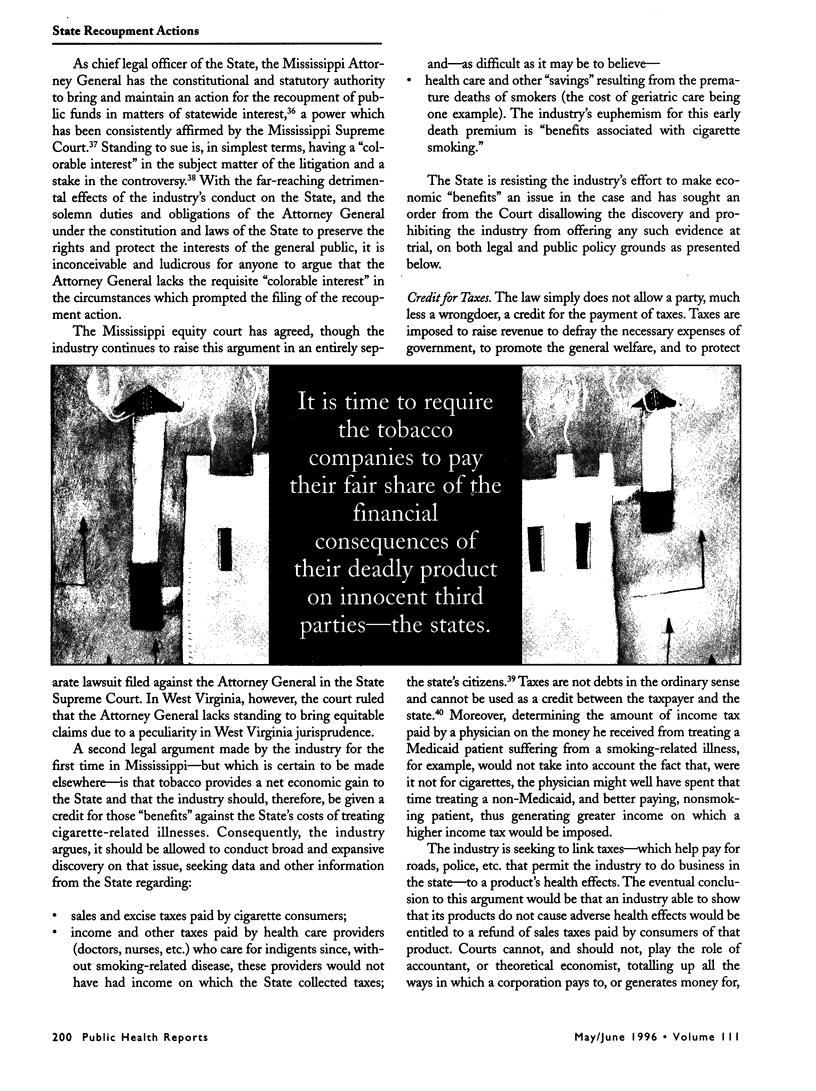Abstract
This article first will explain the reasons behind and goals of state recoupment actions against the major cigarette manufacturers, their lobbying arm and trade association, and their public relations firms (collectively referred to as the "tobacco industry") for the recovery of Medicaid and other indigent care expenditures on smoking-related illnesses. These are, primarily, to relieve the heavy financial burden on state treasuries and to stop the tobacco industry from targeting children in advertising and promotions. To put this new legal approach in perspective, the article presents a brief historical background to the tobacco industry's litigation strategy: to wear down opponents through delay and intimidation, to cast doubt on science, and to wrongfully invoke the attorney-client privilege against disclosure of incriminating evidence. Next authors discuss the states' strategy: each filing one suit seeking equitable remedies under theories of restitution/unjust enrichment, indemnity, public nuisance, and injunctive relief to protect the interests of minors, instead of maintaining thousands of product liability claims on behalf of individual smokers. This will be followed by a critique of the industry's response to state actions: political attacks against attorneys general and trial lawyers and charges that the lawsuits would hurt business as well as a variety of legal challenges, including an imaginative but risky defense that if smoking indeed causes disease and attendant health care expenditures, then the tobacco industry ought to be given a credit against those expenditures for the taxes generated by its business and the "savings" which inure to the states from the premature deaths of smokers (the cost of geriatric care, for example). The article will wrap up by impressing on health officials and other readers what is at stake in these actions and what their success or failure will mean for the Medicaid program.
Full text
PDF











Selected References
These references are in PubMed. This may not be the complete list of references from this article.
- McGinnis J. M., Foege W. H. Actual causes of death in the United States. JAMA. 1993 Nov 10;270(18):2207–2212. [PubMed] [Google Scholar]
- Thompson G. A., Jr Lipid molecular species retailoring and membrane fluidity. Biochem Soc Trans. 1989 Apr;17(2):286–289. doi: 10.1042/bst0170286. [DOI] [PubMed] [Google Scholar]
- Warner K. E., Fulton G. A. The economic implications of tobacco product sales in a nontobacco state. JAMA. 1994 Mar 9;271(10):771–776. [PubMed] [Google Scholar]


